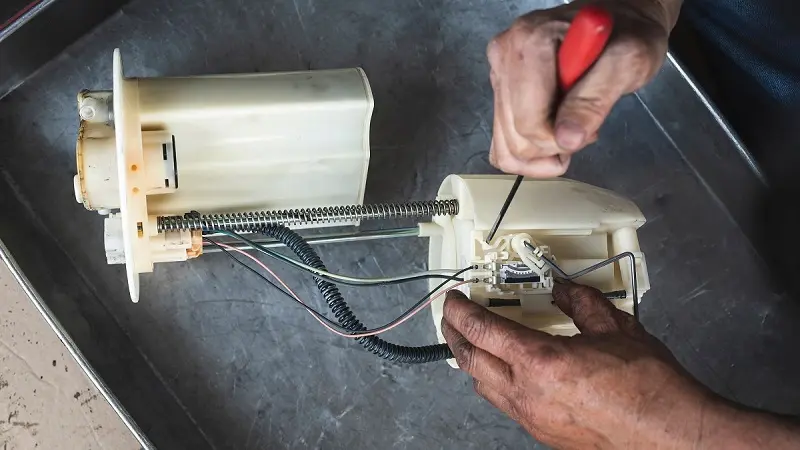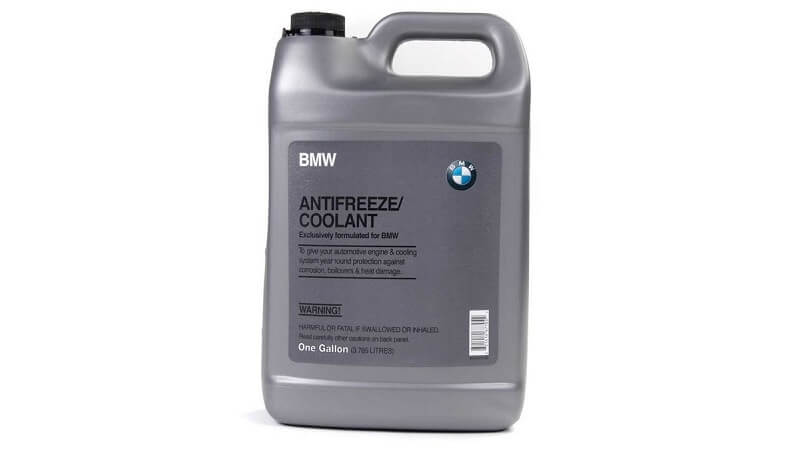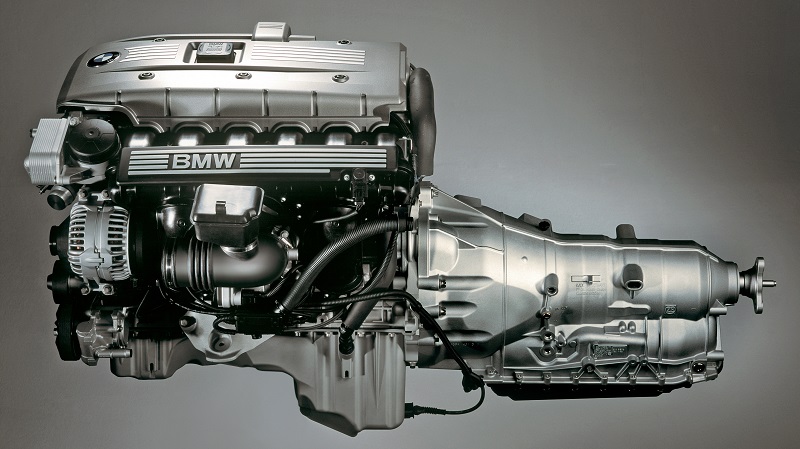If you’re a BMW owner or a mechanic familiar with BMW vehicles, you’ve likely encountered the mysterious world of diagnostic trouble codes (DTCs). Among these, the 2AAF code stands out as a key identifier of potential fuel pressure issues within BMW’s fuel system. Whether you’re experiencing rough idling, struggling to start the engine, or noticing a decline in fuel efficiency, understanding the implications of the 2AAF code is crucial for maintaining your BMW’s optimal performance.
In this comprehensive guide, we’re exploring the 2AAF BMW code, discussing its significance, and the possible fuel pressure problems it may be warning you about. From unraveling the code’s meaning to exploring the symptoms and underlying causes of fuel pressure issues, we’ll equip you with the knowledge you need to decode this diagnostic enigma. So, let’s dive in and unravel the mysteries behind the 2AAF code to ensure your BMW continues to run at its best.

Understanding the 2AAF BMW Code
The world of diagnostic trouble codes can be overwhelming, but breaking down the 2AAF BMW code into its components reveals a wealth of information about your vehicle’s fuel system health. In simple terms, the 2AAF code is a specific DTC that relates to fuel pressure problems within BMW vehicles. But let’s dive a bit deeper:
Significance of the Code — Fuel Pressure Issues
When your BMW’s engine control module (ECM) detects a deviation in the fuel pressure from the expected values, it triggers the 2AAF code. This deviation can be due to a range of fuel system problems that affect the pressure required for efficient combustion. Ignoring this code could lead to a cascade of performance issues and potential damage to various engine components.
Why Understanding the Code Matters
While the 2AAF code might seem like a jumble of numbers and letters, deciphering its meaning can save you time, money, and headaches. By grasping its significance, you can quickly pinpoint potential fuel pressure issues and take timely action to rectify them. Whether you’re a hands-on DIYer or rely on a mechanic, knowing what the 2AAF code indicates empowers you to make informed decisions about your BMW’s maintenance and repair needs.
In the following sections, we’ll explore the symptoms that might accompany fuel pressure issues, touch on the root causes behind the 2AAF code, and guide you through the diagnostic and repair processes. By the end of this guide, you’ll be well-equipped to tackle fuel pressure problems head-on and ensure your BMW continues to deliver the driving experience you expect.
Common Symptoms of Fuel Pressure Issues
Detecting potential fuel pressure problems early can save you from a world of frustration and prevent more extensive damage to your BMW’s engine. The 2AAF code is often accompanied by a set of telltale symptoms that can serve as warning signs that something is amiss within your vehicle’s fuel system. Here are some common symptoms to watch out for:
- Rough Idling — If your BMW’s engine idles roughly or experiences fluctuations in RPM when at a standstill, it could be due to insufficient or irregular fuel pressure. The engine may feel shaky and unstable, indicating an imbalance in the air-fuel mixture.
- Hard Starting — Trouble starting your BMW’s engine, especially when it’s cold, can be indicative of fuel pressure issues. Insufficient fuel pressure might hinder proper combustion during startup, leading to extended cranking times or even stalling.
- Poor Acceleration and Performance — A decline in acceleration and overall engine performance might stem from inadequate fuel pressure. You may notice sluggishness when accelerating or difficulty maintaining higher speeds.
- Engine Misfires — Fuel pressure problems can cause misfires, which are noticeable as momentary sputters or jerks from the engine. Misfires can lead to reduced power, increased exhaust emissions, and potential damage to the catalytic converter.
- Decreased Fuel Efficiency — If you find yourself visiting the gas pump more frequently than usual, it could be a result of compromised fuel pressure. Insufficient pressure might lead to incomplete combustion and decreased fuel efficiency.
- Check Engine Light — Of course, the presence of the 2AAF code itself is often signaled by the illumination of the check engine light on your dashboard. While this light can indicate various issues, the 2AAF code points specifically to fuel pressure problems.
- Stalling — In more severe cases, your BMW might stall unexpectedly while driving. This can be dangerous and is often a result of inconsistent fuel pressure disrupting the engine’s operation.
Experiencing any of these symptoms warrants prompt attention, as they could indicate underlying fuel pressure issues that, if left unaddressed, might lead to more extensive engine problems.
Possible Causes of the 2AAF Code and Fuel Pressure Problems
The 2AAF code is a gateway to understanding potential fuel pressure problems, but what exactly triggers this code? Let’s explore some of the common underlying causes that can lead to the detection of the 2AAF code in your BMW’s ECM:
- Failing Fuel Pump — The fuel pump is responsible for delivering fuel from the tank to the engine at the right pressure. A failing fuel pump can lead to inadequate fuel pressure, causing a drop in engine performance and triggering the 2AAF code.
- Fuel Pressure Regulator Malfunction — The fuel pressure regulator ensures a consistent flow of fuel to the engine and maintains optimal pressure. A malfunctioning regulator can disrupt this balance, resulting in erratic fuel pressure readings and the activation of the 2AAF code.
- Clogged Fuel Filter — Over time, the fuel filter can become clogged with debris, limiting the flow of fuel to the engine. This restriction can lead to reduced fuel pressure and the subsequent detection of the 2AAF code.
- Leaks in the Fuel System — Any leaks in the fuel system, whether in the fuel lines, connectors, or injectors, can lead to a loss of pressure. These leaks can be caused by wear and tear, corrosion, or faulty components.
- Faulty Fuel Pressure Sensor — The fuel pressure sensor provides feedback to the ECM about the fuel pressure in the system. A malfunctioning sensor can send inaccurate data to the ECM, leading to the activation of the 2AAF code.
- Vacuum Leaks — Vacuum leaks in the engine’s intake system can disrupt the air-fuel mixture and affect fuel pressure. Although vacuum leaks are more related to air intake, they can indirectly impact fuel pressure and trigger the 2AAF code.
- Wiring or Connector Issues — Electrical problems, such as damaged wiring or poor connections, can interfere with the proper functioning of fuel system components, resulting in inconsistent fuel pressure readings and the 2AAF code.
Diagnostic Process and Steps
When faced with the 2AAF code and the accompanying symptoms, a systematic diagnostic process is essential to identify the root cause of the fuel pressure issues in your BMW. Here’s a step-by-step guide to help you navigate the diagnostic process effectively:
- Scan for Codes — Use a diagnostic scanner to retrieve the 2AAF code and any other relevant codes from your BMW’s ECM. This will provide a starting point for your investigation.
- Inspect Fuel Pressure — Connect a fuel pressure gauge to the fuel rail and measure the actual fuel pressure. Compare the reading to the manufacturer’s specifications to determine if the pressure is within the expected range.
- Check for Leaks — Inspect the fuel lines, connections, and injectors for any signs of leaks. Even a small leak can lead to significant pressure drops. Address any leaks you find.
- Test Fuel Pump — Perform a fuel pump test to ensure it’s delivering fuel at the correct pressure. If the fuel pump is not functioning properly, it might need replacement.
- Evaluate Fuel Pressure Regulator — Test the fuel pressure regulator to ensure it’s maintaining consistent pressure. A malfunctioning regulator can cause pressure fluctuations and trigger the 2AAF code.
- Examine Fuel Filter — If your fuel filter is clogged, it can lead to reduced fuel pressure. Consider replacing the fuel filter if it’s dirty or hasn’t been changed in a while.
- Check Fuel Pressure Sensor — Test the fuel pressure sensor to ensure it’s providing accurate readings to the ECM. A faulty sensor can contribute to the activation of the 2AAF code.
- Address Vacuum Leaks — While not directly related to fuel pressure, vacuum leaks can impact the air-fuel mixture. Inspect the intake system for leaks that could affect engine performance.
- Inspect Wiring and Connections — Check the wiring and connections related to the fuel system components. Poor connections or damaged wiring can lead to inconsistent readings and trigger the 2AAF code.
- Confirm Repairs — After identifying and addressing the root cause of the fuel pressure issue, clear the codes from the ECM using the diagnostic scanner. Test-drive the vehicle to ensure that the symptoms have been resolved.
It’s important to note that diagnosing and repairing fuel pressure issues can be complex, and some steps might require specialized tools and equipment. If you’re not comfortable with the diagnostic process, it’s recommended to seek assistance from a qualified BMW mechanic.
Addressing the 2AAF Code — Repairs and Solutions

Once you’ve completed the diagnostic process and pinpointed the source of the fuel pressure issues, it’s time to consider the appropriate repairs and solutions. The steps you take will depend on the specific problem identified. Here are some potential solutions for addressing the 2AAF code and restoring your BMW’s fuel system to peak performance:
- Replace the Fuel Pump — If the fuel pump is failing or not delivering fuel at the proper pressure, replacement might be necessary. A new fuel pump should restore the correct fuel pressure and resolve the 2AAF code.
- Clean or Replace the Fuel Pressure Regulator — If the fuel pressure regulator is malfunctioning, you might be able to clean it to restore proper functionality. In some cases, replacement might be required to ensure consistent fuel pressure.
- Change the Fuel Filter — If a clogged fuel filter is causing pressure issues, replacing it with a new filter can improve fuel flow and pressure. Regularly changing the fuel filter as part of maintenance can prevent future issues.
- Repair Fuel System Leaks — Address any identified fuel system leaks promptly. Depending on the location and severity of the leak, you might need to replace damaged components, such as fuel lines or connectors.
- Replace Faulty Fuel Pressure Sensor — If the fuel pressure sensor is providing inaccurate readings, replacing it with a new sensor can ensure accurate data transmission to the ECM and prevent the 2AAF code from reappearing.
- Perform Software Updates — If there’s evidence of a software glitch triggering the 2AAF code, consider checking for available ECU software updates from BMW. Updating the software might resolve the issue.
- Regular Maintenance — To prevent the recurrence of the 2AAF code and fuel pressure issues, adhere to the manufacturer’s recommended maintenance schedule. Regularly inspecting and servicing the fuel system can prevent problems before they arise.
By taking appropriate action based on the diagnosis, you can address the fuel pressure issues causing the 2AAF code and ensure your BMW runs smoothly once again.
Preventive Measures and Maintenance
Prevention is key to maintaining a healthy and efficient fuel system in your BMW. By adopting proactive measures and following a routine maintenance regimen, you can significantly reduce the likelihood of encountering the 2AAF code and other fuel-related issues. Here’s how to keep your BMW’s fuel system in top shape:
- Quality Fuel — Always use high-quality fuel from reputable gas stations. Premium fuels often contain fewer contaminants and additives that can keep your fuel system clean.
- Regular Fuel System Cleaning — Consider using fuel system cleaning additives or services as recommended by BMW. These help prevent carbon buildup in the fuel injectors and maintain proper fuel flow.
- Fuel Filter Replacement — Follow your BMW’s recommended service interval for fuel filter replacement. Regularly changing the fuel filter prevents clogs that could lead to fuel pressure problems.
- Scheduled Maintenance — Adhere to your BMW’s maintenance schedule as outlined in the owner’s manual. Regular maintenance includes checks and adjustments to the fuel system to catch potential issues early.
- Promptly Address Symptoms — If you notice any symptoms such as rough idling, poor acceleration, or unusual engine behavior, don’t ignore them. Addressing problems early can prevent them from escalating and triggering the 2AAF code.
- Drive Regularly — Regular use of your BMW helps keep the fuel system components functioning optimally. Extended periods of inactivity can lead to fuel system problems over time.
Integrating these preventive measures into your BMW maintenance routine allows you to minimize the chances of encountering the 2AAF BMW code and ensure that your fuel system operates smoothly and efficiently. Remember, a well-maintained fuel system not only improves your vehicle’s performance but also contributes to its longevity.
Fix 2AAF BMW Code with Quality BMW Parts
Throughout this guide, we’ve explored the intricacies of the 2AAF BMW code, the symptoms of fuel pressure issues, the common causes behind the code, and the diagnostic and repair processes. Armed with this knowledge, you’re better equipped to make informed decisions about addressing the 2AAF code and ensuring your BMW’s fuel system remains in excellent condition.
If you’re looking for quality BMW parts for your car, we have them! Check our catalog and find a wide range of genuine BMW, OEM and quality aftermarket parts.





